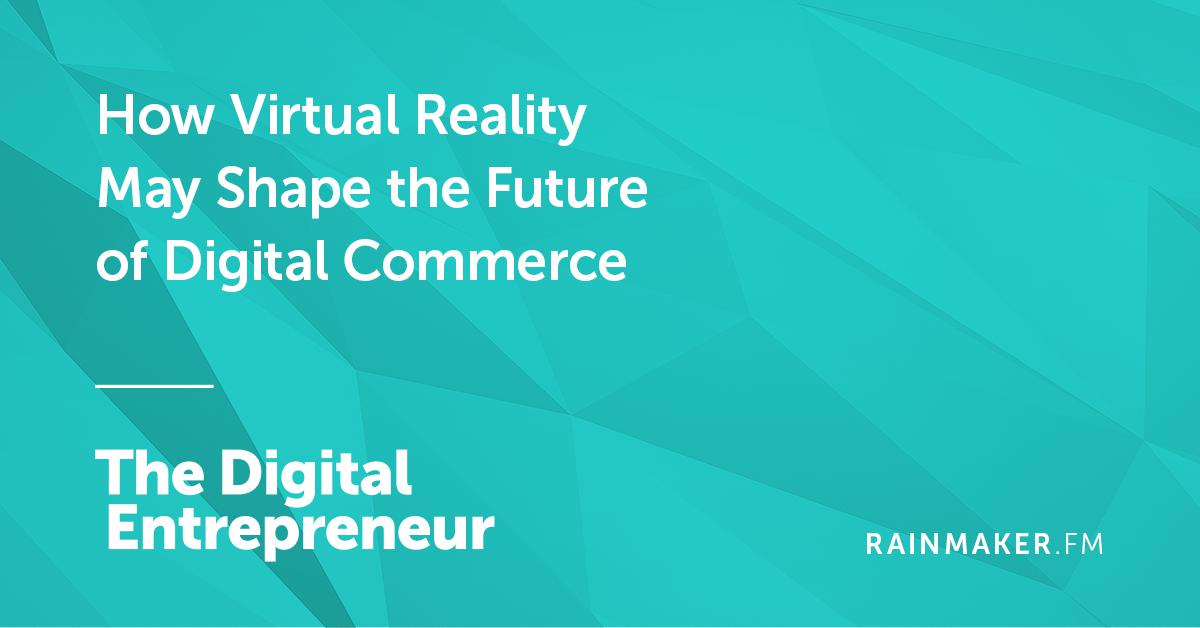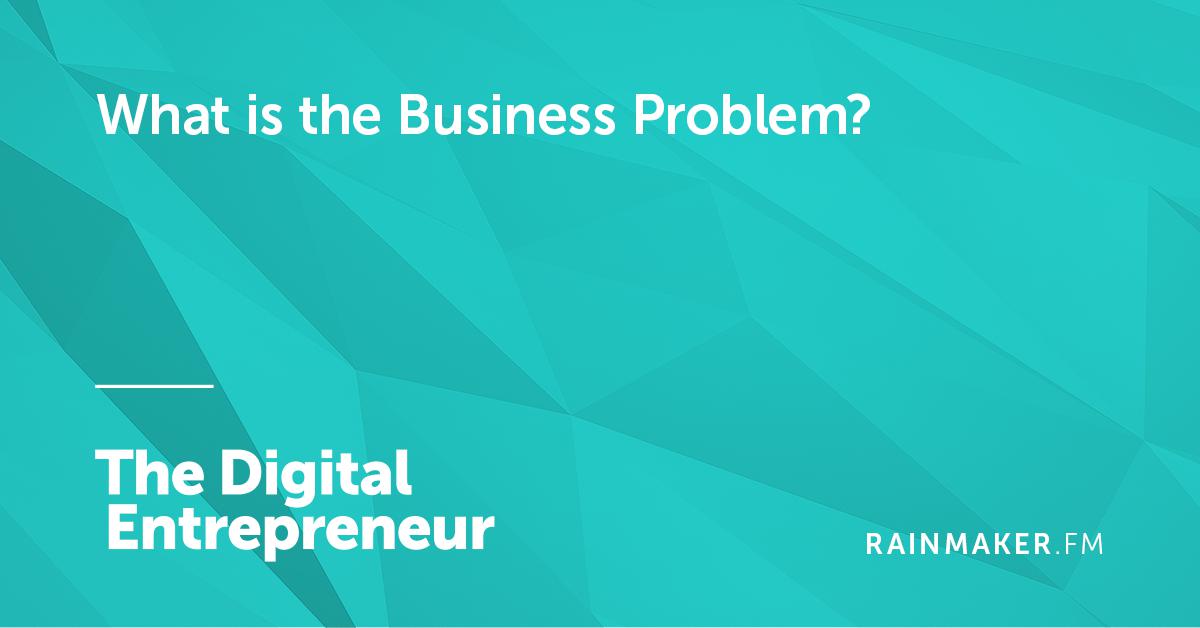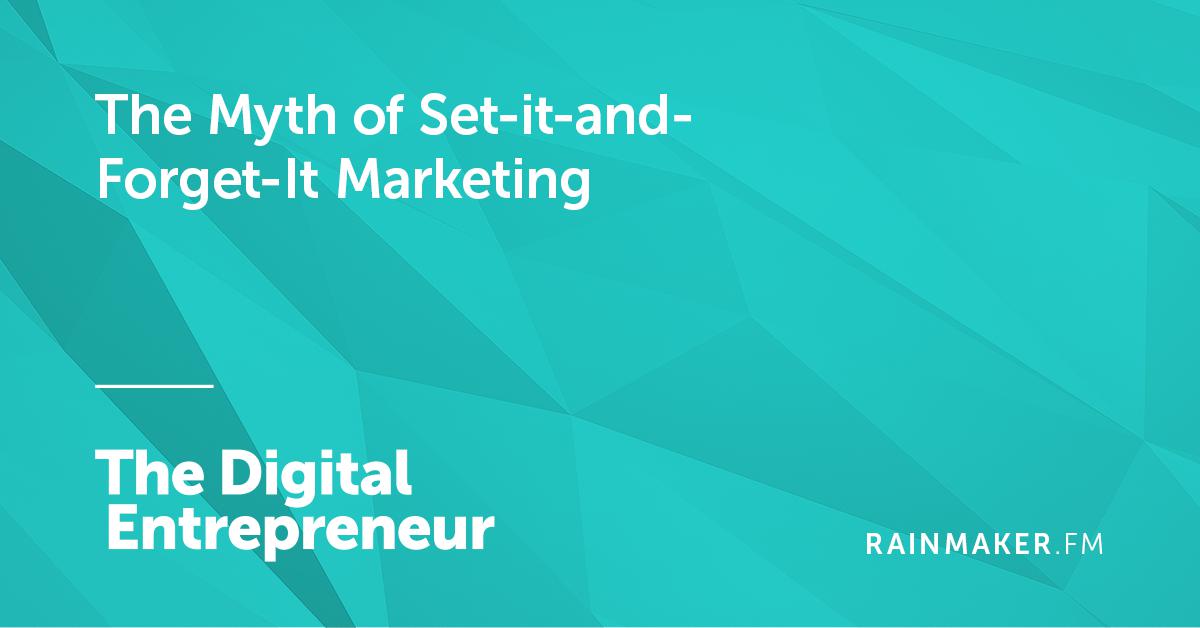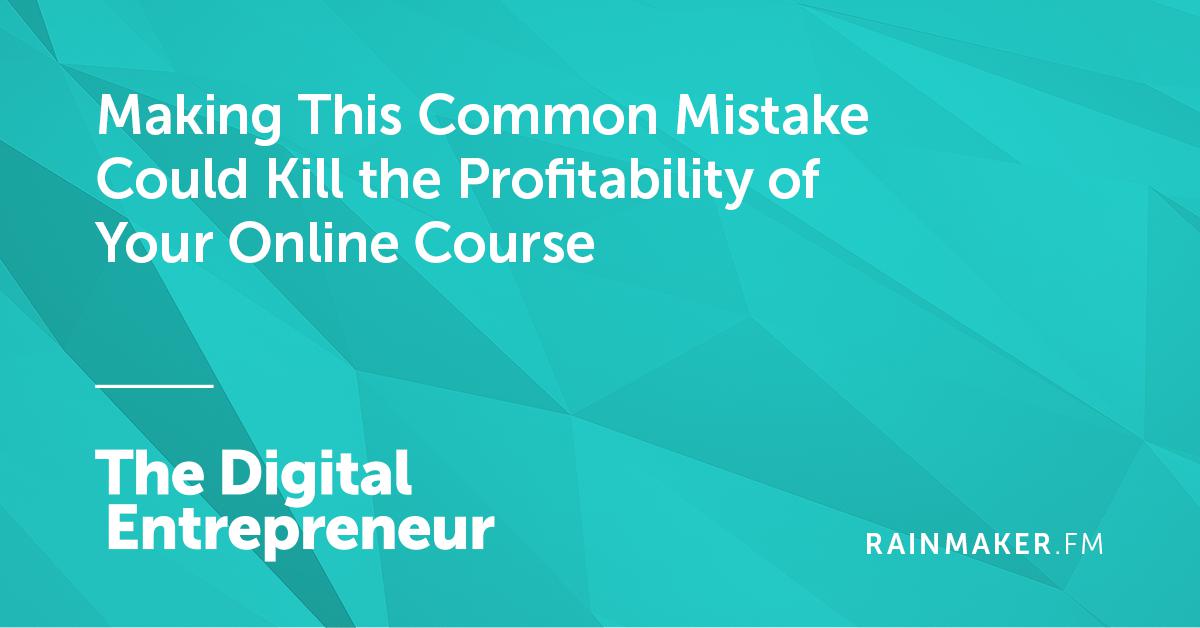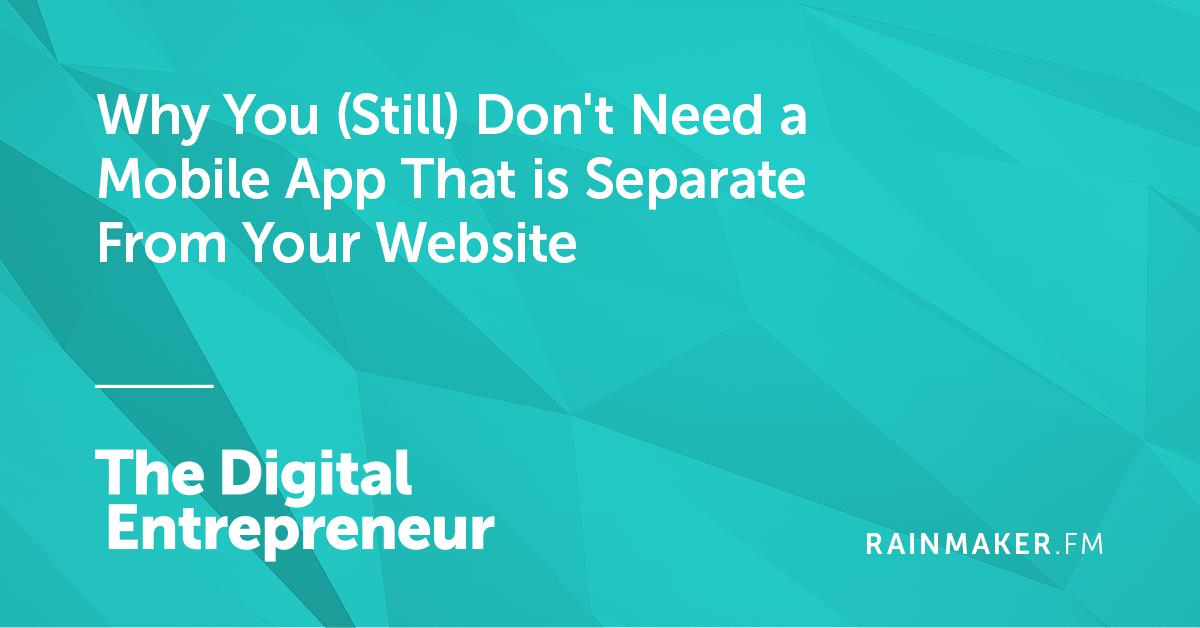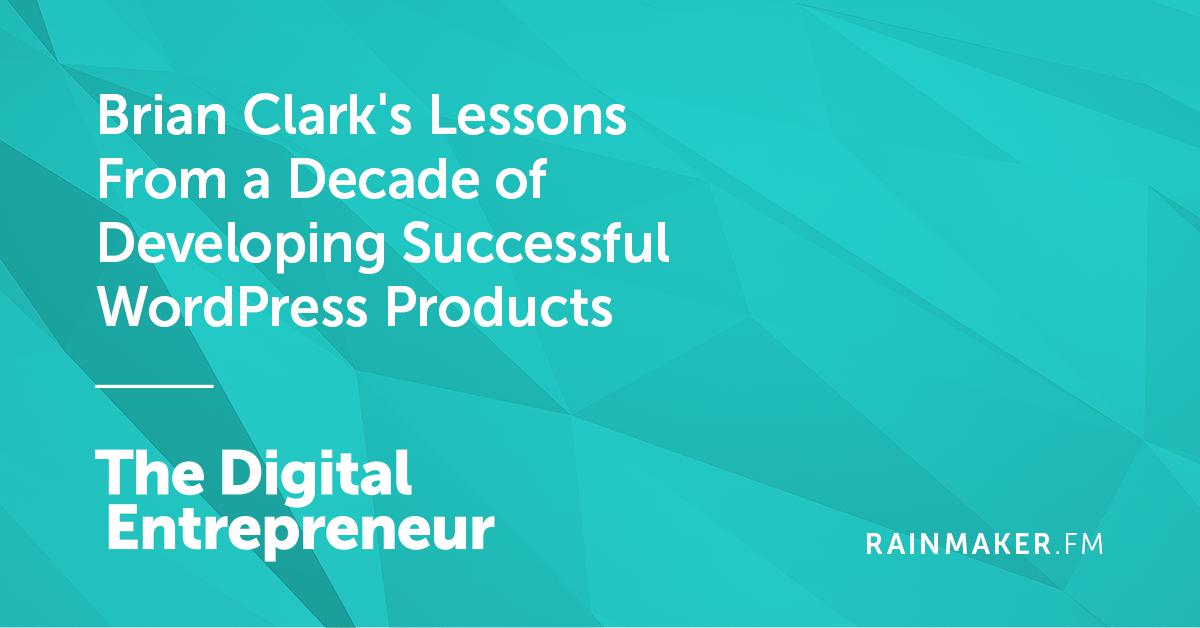
On this week s episode, we expound on the topic of WordPress product development by picking Brian Clark s brain on the topic. He’s spent the last decade developing themes, plugins, and now, of course, the Rainmaker Platform. So he has some lessons to share …
In this 30-minute episode, Brian shares his insight on:
- The point when he realized that developing WordPress products was the right path for Copyblogger
- Why starting with the business problem — as Chris Lema discussed two weeks ago — is an absolute must
- The biggest mistake people make when trying to create a premium WordPress product
- How he views the current level of opportunity in the premium WordPress marketplace
- Whether digital entrepreneurs should feel comfortable building on top of WordPress
- The best way to handle the ongoing maintenance of a WordPress product
And … why Chris Lema is teaching the new Digital Commerce Academy course on building WordPress products, instead of Brian. 
The new course is called Themes, Plugins, and More: Building WordPress Products the Smart Way. It’s available when you join Digital Commerce Academy, and right now is the perfect time to do so.
You certainly don’t want to wait past Friday, May 27, 2016 — because that is the day when the annual investment goes up from $395/year to $595/year.
For more details on what you can expect inside of Digital Commerce Academy when you join, listen to this week’s episode all the way through, then make your way over to the Digital Commerce Academy sales page for a complete rundown.
We hope you enjoy this week’s episode …
Listen to The Digital Entrepreneur below …
The Show Notes
- Digital Commerce Academy — join before May 27th to lock in the low price of $395/year before it goes up
- WordPress Product Development: Start with the Business Problem — with Chris Lema
- Digital Commerce Institute
- Brian Clark
- Jerod Morris
The Transcript
Brian Clark s Lessons From a Decade of Developing Successful WordPress Products
Voiceover: You’re listening to The Digital Entrepreneur, the show for folks who want to discover smarter ways to create and sell profitable digital goods and services. This podcast is a production of Digital Commerce Institute, the place to be for digital entrepreneurs.
DCI features an in-depth, ongoing instructional academy, plus a live education and networking summit where entrepreneurs from across the globe meet in person. For more information, go to Rainmaker.FM/DigitalCommerce.
Jerod Morris: Welcome back to The Digital Entrepreneur. I’m your host, Jerod Morris, VP of marketing for Rainmaker Digital, and this is episode No. 15 of The Digital Entrepreneur.
In today’s episode, we are going to expound on the topic of WordPress product development that we broached back in episode 13, so two episodes ago. That episode was titled WordPress Product Development: Start with the Business Problem and featured a snippet from a Digital Commerce Academy case study that I hosted with Chris Lema.
Today, I’m going to pick Brian Clark’s brain a bit about WordPress product development because he knows a thing or two about it, having developed themes, plugins, and now, of course, a revolutionary SaaS application for WordPress called the Rainmaker Platform.
With that said, let me bring Brian in here, of course, the founder and CEO of Rainmaker Digital, so we can pick his brain. Brian, how are you?
Brian Clark: Don’t pick too hard. I’m getting up there.
Jerod Morris: Getting up there, yes, but you have plenty of experience to draw on.
Brian Clark: Now, Jerod. The answer is, “No, you’re still a young and devastatingly handsome man,” is what you’re supposed to say, but that’s okay. We’ll work on it.
Jerod Morris: Okay, so let’s mine this experience of yours, limited as it may be. At what point did you realize that developing products for WordPress would be the right path for Copyblogger back when you launched Copyblogger just as a blog but that didn’t have any products attached to it in the beginning?
The Point When Brian Realized That Developing WordPress Products Was the Right Path for Copyblogger
Brian Clark: Yeah, it wasn’t our first product. That was an online course, which we’ve talked about before, but it’s really a quite interesting story because WordPress started in 2005. I started playing with WordPress with my first site in late 2005 and then launched Copyblogger in 2006, January, on WordPress, totally open source. No paid products, no anything. There was no premium market whatsoever.
All throughout 2006, basically just worked on creating content, building the audience, and all that good stuff. My right-hand man at the time was Chris Pearson, who was my designer. He designed a really cutting-edge design for Copyblogger that really made a name for him in the design community. But he really didn’t want to take clients, and of course, I didn’t blame him. At that point, I was leaving any kind of client-based business and was looking for a different business model.
You go to 2007, and of course, that’s when we launched Teaching Sells. So it was 2008, and Chris had been developing themes for another project, a video project that we had. At that time, everything was free. You would develop a theme and give it away for free, and you would have links in the footer that would go wherever you want.
At that time, you may remember those good old days, Jerod, that was a hell of an SEO strategy, so that was really how you got paid with WordPress themes. I don’t remember the name of that theme. That shows you I am getting old, but it was massively popular. That’s because we distributed it off of Copyblogger. Makes sense.
We sold a property, the video property, and included that free theme with all those links for six figures. I used that money to basically support myself to develop Teaching Sells, so I didn’t have to take side projects anymore. Pearson went off and, I think, invested heavily in hookers and blow for a while there and then kind of disappeared. I’m just joking, Chris. Maybe I’m not. I don’t know.
Then Chris comes back, and he’s like, “You know what? I’m not making free themes anymore. I want to sell themes,” and I’m like, “Oh, that’s interesting. Is anyone doing that?” And he goes, “Yeah, there’s this guy, Brian Gardner ” For those of you who are not making the connection, he’s a partner in our company right now. Brian is, not Chris.
He’s like, “Yeah, Brian Gardner is selling themes, making $30,000 a month,” and I’m like, “Okay, I’m listening.” That was the beginning of the WordPress premium market, Brian Gardner, our guy, and then we jumped in it pretty quickly thereafter, but we didn’t build a theme.
We built a design framework, and that was called Thesis. Chris started it on his own. Then he came to me, and he said, “Look, I want to make this big. I don’t want to do marketing. I don’t want to do anything. I just want to do the development.” I said, “Okay.”
This was in 2008, I believe, coming into the fall. We formed DIYthemes and he was doing about $10,000 a month in sales. We partnered up, and pretty soon that was $10,000 a day–and there you have it. The interesting thing there is that the premium market really blossomed because people were really paying for support more than anything.
Jerod Morris: Yeah. You know what’s interesting there is, obviously, you talked about the partnership. You partnered with somebody who was really good at the development part. You were really good at the marketing part. That seems to be a pretty good formula for folks to follow, for people who want to get out there with a product and maybe feel like they don’t have the development chops. That path of partnering, do you think that that’s something that people should consider if this is an area that they want to get into?
Why Starting with the Business Problem–As Chris Lema Discussed Two Weeks Ago–Is an Absolute Must
Brian Clark: Yeah, because I think there’s an incredibly large amount of rather savvy marketing-type people from a content standpoint. Maybe they have an audience. Look at Michael Hyatt. He ended up developing his own WordPress theme. It’s not like he’s like us and StudioPress. We have the most popular design framework on the planet. It’s on so many WordPress sites it boggles the mind, but as far as Michael is concerned, getting some developers to put that together because people love Michael and want to buy his theme, that’s a good product right there.
There’s a lot of different ways you can come at it without being a developer. Reflecting a little on what Chris Lema has already said, developers know code but they don’t necessarily know business. They don’t necessarily know marketing. They don’t know how to identify the business problem. You know what I’m saying? That’s why it’s such a good marriage.
Jerod Morris: Well, that’s the other interesting part of your story. You didn’t know when you started Copyblogger that you were eventually going to be developing themes, but you got into that. Part of that is because you started with a business problem when you started Copyblogger.
Again, as Chris Lema discussed on that last episode, starting with the business problem is so important, and it’s where people need to start from. In addition to that, and you said that you agree with that, what other tips do you have for where people should start and maybe mistakes that people make as they’re thinking about getting into the WordPress premium market?
The Biggest Mistake People Make When Trying to Create a Premium WordPress Product
Brian Clark: WordPress, for me, has always been, “What’s my problem?” Now, again, there are all sorts of plugins and themes now. Frankly, if you use them, you can identify things that could be better, and that’s a business problem. That’s an opportunity right there.
When we first started, you couldn’t do anything. People that don’t remember what it was like in 2006, 2007, when you couldn’t just enter an alternate title for Google and then have a different one on the page, things we take for granted, and it was stuff like that. It went hand-in-hand with Chris and I.
Chris would look at what made me upset that I couldn’t do it, that I had to ask him. I’m very independent, if you haven’t noticed, so I get mad when I can’t just do something that I think should be easy. Chris would go do it, and he’d laugh at me because I couldn’t code. But then I’m like, “Well, Chris, other people have these problems. Most of the content creators out there are like me, not like you.” That’s what a design framework was designed to do–take the code out of these very simple business and marketing-related functions that come with publishing content, so identifying the problem.
I saw something earlier, I think it was an article about developing your own business or developing a business, and it was, “Sit down and list 10 problems that you have right now, and then figure out very concrete ways how you would solve them.” That’s all we did with WordPress. We were users of WordPress, but here’s the interesting thing. I think this is applicable today as much as it was back then.
When we developed products, the WordPress community at that time, and really, kind of now, that’s developers and designers. Just remember that you are not building for them. The problems I had are not the same thing that they would have.
That’s why we owned it. We thought like businesspeople instead of like developers. Really, I thought like myself because these were my problems. So that’s the biggest mistake, number one, starting with something like, “Oh, wouldn’t this be cool.” That’s a developer mindset. Sometimes you get lucky, and it works–but don’t mistake luck for strategy.
The worst advice I ever see given out there is someone who got lucky and then they tell people, “Well, just make whatever you want.” Come on. Just because you got lucky doesn’t mean there wasn’t an existing market desire. There was. You just didn’t know it. You got lucky. It’s much better to find an existing problem and then solve it. Easy.
Jerod Morris: Luck is not a business strategy.
Brian Clark: Luck is not a business strategy. It helps, but it’s not.
Jerod Morris: So let me ask you this. It’s interesting about WordPress. I remember when I first got into WordPress, and what was so cool about it was, obviously, that WordPress itself was free and there were tons of free themes and tons of free plugins. It felt like you could do all of this stuff for free. And obviously, you realize the limitation of these free plugins, these free themes, and you start to see this premium market crop up.
Yet paying for stuff on WordPress, there was a point there where it was still kind of weird, but there was obviously a big opportunity because there weren’t that many people doing it. You contrast that with now where people just understand that, for a good theme, for good plugins that work and are going to be supported, you’re going to pay for them.
Yet there are a lot more people out there doing it now. It might seem like the opportunity isn’t quite as great as it was before, but people are more conditioned now to paying for things. It’s an interesting balance. What do you think now of the opportunity to get in for WordPress products?
How Brian Views the Current Level of Opportunity in the Premium WordPress Marketplace
Brian Clark: I think it’s awesome. You make a good point because trailblazers can reap some big rewards. They’re the first to the goldmine. They’re also the ones who take the arrows in the back. That part is gone. An interesting illustration here is in the WordPress managed-hosting environment, which we’re part of with Synthesis.
Think about that. When we started out with WordPress, it was just install that was the selling point. “You can install WordPress with one click on blah, blah, blah,” and we always had trouble. When Copyblogger would hit the Digg homepage–that’s dating myself–and just thousands of people just stampeded us at one time, you know how I spent my day? With my hosting admin trying to keep the site up because WordPress is, without being optimized a certain way, and you know this
Jerod Morris: I remember those days.
Brian Clark: Exactly. You remember why you were part of the original team that became Synthesis?
Jerod Morris: It came into being for that reason.
Brian Clark: Exactly, because publishers who were successful would lose their minds if they succeed at their goal of getting viral traffic and then the site goes down. It used to be a real struggle–again, a business problem. That’s where Synthesis came from. That’s where WP Engine came from. Pagely was actually the first one.
It’s that, “Hey, WordPress is special,” in many senses of the word. It may power 25 percent of the Internet, but it has its own issues with its database structure and all that kind of thing. So you had to have hosting optimized for WordPress, not just whatever you want to do, GoDaddy-type stuff.
Again, it was a business problem, and hosting was our biggest problem. I never wanted to get into the hosting business, but once I realized that I wanted to do Rainmaker, I realized we got to get hosting down. I said, “Well, in the meantime, let’s host ourselves,” and that’s how we all started talking to each other. You were in the mailroom also doing server stuff, and now you’re VP of marketing. How the hell does that happen?
Jerod Morris: Yeah. I don’t know. A lot of hard work and people giving me opportunities. But yeah, that’s how that whole thing came into being. I was running sites that were just crashing nonstop, and Synthesis was developed exactly to do that–to take the idiosyncrasies of WordPress and host them in a better way so that it was more efficient, so that it was better.
Brian Clark: Yeah, so I guess to answer your actual question, there’s always going to be the next set of problems. What was good enough before is not going to be good enough now. I would say, number one, you need to have a very carefully constructed and just step-by-step approach to approaching how to come up with a viable idea, and we can help you with that.
The other thing you need, I think, is to be a participant. You have to use WordPress, and you have to use some of these free and/or premium plugins. Gravity Forms was one of the earlier other premium products because forms are hard.
When Gravity Forms came out, we were all like, “Oh, thank you, Carl.” Then I look at it now, and Gravity Forms is really hard to use–and you’ve seen how many different form companies? I think Jared Atchison has a new product. It’s a simple form builder. Look at that.
Gravity Forms has been the leader, and if you have the mindset that, “Oh, well, I can’t do that,” no, you can because there’s always things there. All you have to do is observe and then, again, have this methodology to go by in order to evaluate. “Am I on the right track? Is there a market for this? How do I get the word out?”
Jerod Morris: The other point of trepidation I think people have is just about building on WordPress itself, building a product for WordPress itself. Are we, do you think, past the point of wondering if we should trust WordPress, or should digital entrepreneurs stay skeptical and mindful that they’re building products on top of an infrastructure that they don’t control?
Whether Digital Entrepreneurs Should Feel Comfortable Building on Top of WordPress
Brian Clark: Well, number one, I’ll take open source over anything else any day. Open source has a lot of different eyes on it. It has a lot of smart people involved. It’s decentralized. Automattic does not control WordPress even though they do have influence. I’ve never even thought twice about that, really, because it’s open source.
The interesting thing about being really ambitious, of course, is if you don’t like the direction WordPress is going, you can fork it. That’s the beauty of open source. For example, WordPress is starting to disappear in Rainmaker, and that’s the goal. Not that we have anything against WordPress. It’s we’re trying to build something bigger that’s in line with our own vision.
And WordPress, by going to the API functionality and all that, is right on board with this. They want you to build these unique hosted things that were never really contemplated at the beginning of WordPress. In that sense, WordPress is entrepreneur-friendly–and more so than it’s ever been.
But if for some reason you didn’t like the direction WordPress was going and you’re heavily invested in it, you just fork it. That may seem like a radical thing, but that’s how WordPress came to be in the first place. Matt forked another CMS and created WordPress.
Jerod Morris: One of the other challenge is about developing these premium products for WordPress, and you mentioned it. People are paying for support, and there’s this ongoing maintenance that needs to happen–whether it’s security updates, whether it’s compatibility, whether it is support. What is the best way to handle the ongoing maintenance of a WordPress product?
The Best Way to Handle the Ongoing Maintenance of a WordPress Product
Brian Clark: I think it’s a business opportunity. You’ve seen a lot of these companies that, for a flat, recurring subscription fee, they’ll fix your little problems. They’ll maintain for you. They’ll make sure your plugins are updated. Rainmaker solves all of that problem from a SaaS standpoint, but you also have services providers who do that. It’s a business issue.
We just had a rash of security issues with I don’t want to name the plugins because I may get something wrong, but I know poor Chris Garrett was having a bad week last week because there were security issues. That’s the beauty of Rainmaker because we hear about it and it’s fixed for everyone right then, but I see it as a business opportunity.
It was for us. It is for these companies who’ll do this $100 a month maintenance stuff. It’s not an issue. It’s an issue of diligence, and the problem is that site owners, too often, don’t have that diligence. Therefore, you find, yet again, another business opportunity. So I guess I’m turning that around and saying, if you’re an entrepreneur and there is an issue with sites having security and maintenance issues, what can you do about that?
Jerod Morris: Well, this topic of WordPress product development is one that we’re excited about and interested in diving into more inside of Digital Commerce Academy. We actually have a course coming out about this very topic. Chris Lema who, again, was a guest two episodes ago and has been involved in a case study inside of Digital Commerce Academy as well, he’s actually teaching this course.
It’s called Themes, Plugins, and More: Building WordPress Products the Smart Way. It’s out now with lessons about ideation and business models and product development launch mistakes. A really, really good, thorough, easy-to-digest course, but that has a lot of really meaty and important material in it. I guess my first question for you, Brian, is why is Chris teaching this course instead of you?
And Why Chris Lema Is Teaching the New Digital Commerce Academy Course on Building WordPress Products, Instead of Brian
Brian Clark: I’ll tell you. It never even was a consideration for me that it wouldn’t be Chris–unless he said no, of course. Chris is a great teacher, first and foremost, and that’s important. There are lots of people who are very, very smart with WordPress, but they may not be the best person to teach. Chris is. Here’s the great thing. We’ve done design frameworks, themes, plugins, and hosting, so who’s more qualified to teach WordPress product development?
Well, Chris, actually, because he knows our business, and he’s worked with everyone out there, every major player. Actually, a lot of smaller companies, too, so Chris has, believe it or not, a wider breadth of experience than we do even in this company just from the fact that he’s out there more as an independent WordPress guy. He learns from everyone. He understands everyone’s model, not just ours, so for me it was a no-brainer.
Jerod Morris: Chris will also be speaking at Digital Commerce Summit coming up this October as well.
Brian Clark: Yup, obviously with this course, it’s the nuts and bolts of how to get started, and it’s invaluable. It would be nice to have had that in 2008, but again, it was a different time. I think in his live presentation, Chris is going to really up the ante as far as what is happening right now, so the course that he’s teaching, that’s the fundamentals. This is what you need. If you follow this process, you’re going to have a great opportunity to succeed. The overall presentation at Summit is more, “Okay, where do we go from here?
How to Take Your Digital Business to the Next Level
Jerod Morris: If you listening right now, if you want to learn more about how to build a WordPress product the right way, as well as other digital products like online courses, you can always go to Rainmaker.FM/DCfree and activate your free membership to Digital Commerce Academy.
But I really want to stress that, for the next week from when this episode comes out–and this episode is coming out on Thursday, May 19th, so for the next week until Friday, May 27th–you should really consider starting your paid Digital Commerce Academy membership. The reason is that the price is going up. We’re adding Chris’ course. I have another course that I’m doing on social media advertising.
Brian Clark: Yeah, talk a little bit about that, Jerod, because I looked at the outline, and I’m pretty excited.
Jerod Morris: I’m excited about it, too. It’s something that we’ve been working a lot more on at Rainmaker Digital–using Facebook, using LinkedIn, using Twitter in combination with what we’re already doing from a content marketing perspective to really supercharge what we’re doing.
We know that we have good products. We know that we have good content to educate people about what they need to be successful with those products. That’s really where the paid advertising can pay huge dividends, is when you just need to find the exact people that you’re looking for and direct them to your content. That’s what we’re using it to do.
We’ve learned a lot. We’re continuing to learn a lot, and I’m going to use that course to distill a lot of this information that we’re using from tests that we’re running ourselves and just from conversations that we’ve had with other people who really know their stuff and what we’ve learned from them. Really, really excited about getting that out there, and that’s part of this price raise. These two courses are going to be a part of Academy.
When you have your Academy membership, you have access to all of it. Right now membership requires an investment of $395 per year. After Friday, May 27th, that price goes up to $495 per year.
Brian Clark: Nope, nope.
Jerod Morris: No? Am I wrong?
Brian Clark: It’s $595.
Jerod Morris: Oh.
Brian Clark: There’s no way. The value of what’s already in there for $395 is criminal, and my online course on building a training business, I see people out there selling for $2,000, $3,000. Guess what? These guys learned how to make courses from me in Teaching Sells–and good for them–but do you really want to pay $2,000 or $3,000 when you could pay $395? Then, on top of it, you’ve got your course coming up. You’ve got Chris Lema’s WordPress product course. No way.
We should be charging $2,000 for what’s in there right now, but we’re not. But it is going up to $595, and further, right now you can buy a ticket to the Summit and effectively get your first year of Academy for free, however you want to think about it, or you’re getting your Summit ticket for only $400. Whatever works for you. That’s going away as well.
So there’s some opportunities here to really do yourself a favor, but we’ve been warning people that, hell yeah, this is a great deal, but it’s not going to last forever because that’s not smart. It’s not smart for us, and it’s not smart for anyone when you look at the value that’s in there. So yes, it will become $595, not $395, at the end, which you said was what, May 27th?
Jerod Morris: Yep. Friday, May 27th.
Brian Clark: Yeah, and also, if you’re interested in the Summit, you need to buy that ticket before that date because why not get a free year of Academy?
Jerod Morris: Okay, well, breaking news here on The Digital Entrepreneur. Price is going up to $595, not $495. I agree with the reason why, Brian. Of course, when you lock in that lower price now you get access you lock in that price forever, just so you know, that annual investment. That is locked in forever.
Brian Clark: Which is a steal when you consider how much content we’re going to create over the years. It’s ridiculous.
Jerod Morris: Yeah, but it’s not just courses. There’s coaching, regular coaching, Q&As, case studies, all of that, so if you are interested, if you want to learn more about building digital products and selling them the right way, go to Rainmaker.FM/DCA, and again, do it before Friday, May 27th. Lock in that lower price. Get access to Chris Lema’s course, my course, Brian’s course, and everything else that is in there.
We hope to see you inside of Digital Commerce Academy, and we hope to see you next week on another brand-new episode of The Digital Entrepreneur. I’ll be here. Brian will be here. We will talk about something to enlighten you and make you a better digital entrepreneur.
Until then, have a great week, and we’ll talk to you on the next episode of The Digital Entrepreneur.
Brian Clark: Take care, everyone.
